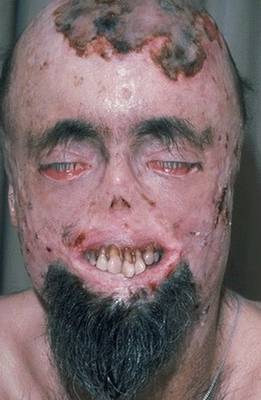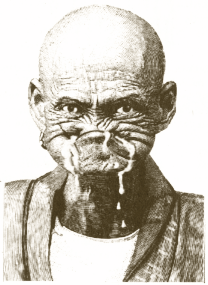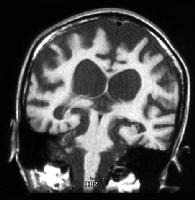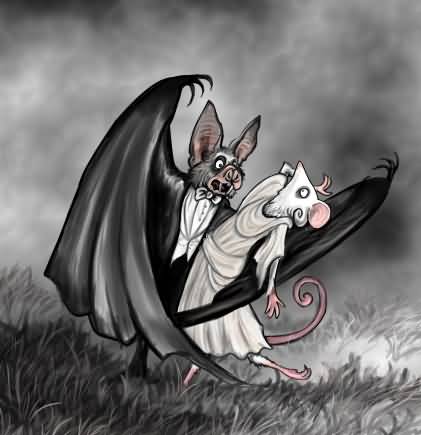
Many humans have been accused of being vampires over the centuries due to the fact that their physical characteristics resembled the traits of these blood-sucking monsters.
However, modern science has since shed some light on the vampire myth, highlighting three medical conditions that may well explain why some unfortunate souls were mistaken for these dark creatures of the night.
It is also worth mentioning the theory about some strange retrovirus that may alter the genetic pool (DNA) of normal humans so that they transform into blood-sucking monsters.
Such theories have no scientific base and the famous K17 or V5 have been invented to fuel stories and movies about vampires ( “Ultra Violet” and “Reign In Darkness” : both movies are works of fiction). The only “vampire” virus that we know and suffer from is money.

Porphyria
Porphyria is a rare hereditary blood disease with symptoms that are uncannily similar to what we now perceive as the classic characteristics of a vampire.
In 1985 biochemist David Dolphin proposed a link between the rare blood disorder porphyria and vampire folklore.
People with this disorder cannot produce heme, an essential component of red blood. This makes them extremely sensitive to sunlight, develop sores and scars that do not heal properly, grow excessive amounts of hair, become allergic to garlic (stimulates heme production and can turn a mild case of porphyria into a severe and painful one) and have tightened skin around the lips and gums, thus making the incisors more conspicuous.
Certain forms of porphyria are also associated with neurological symptoms, which can create psychiatric disorders. The types that affect the nervous system are also known as acute porphyria, as symptoms are rapid in onset and last a short time. Noting that the condition is treated by intravenous haem, he suggested that the consumption of large amounts of blood may result in haem being transported somehow across the stomach wall and into the bloodstream. Thus, vampires were merely sufferers of porphyria seeking to replace haem and alleviate their symptoms.
Porphyria was relatively unknown as a disease until about the mid-twentieth century, but it is now treatable using regular injections of heme.
However, the hypotheses that porphyria sufferers crave the heme in human blood, or that the consumption of blood might ease the symptoms of porphyria, are based on a severe misunderstanding of the disease.
There is no real evidence to suggest that porphyria had anything to do with the development of the original folklore, as the hypothesis is mainly based off the characteristics of the modern vampire in any case.

Rabies
Others scholars have pointed out to a possible relationship between vampirism and rabies. Dr Juan Gómez-Alonso, a neurologist at Xeral Hospital in Vigo, Spain, examined this possibility in a report in Neurology.
The susceptibility to garlic and light could be due to hypersensitivity, which is a symptom of rabies. The disease can also affect portions of the brain that could lead to disturbance of normal sleep patterns (thus becoming nocturnal) and hypersexuality.
The disease can also lead to a drive to bite others and to a bloody frothing at the mouth. This froth could sometimes look like blood, being red in color.
Legend once said a man was not rabid if he could look at his own reflection (an allusion to the legend that vampires have no reflection).
Wolves and bats, which are often associated with vampires, can be carriers of rabies. However, like porphyria, there is little evidence to prove any links between vampires and rabies.

Xeroderma pigmentosum
About 200 people in the United States, or two to four persons in about 1 million live births, suffer from xeroderma pigmentosum, a rare genetic defect that causes extreme sensitivity to the sun’s ultraviolet rays. Ultraviolet light disrupts normal cell functioning in people who have the disorder, causing cancerous cell changes.
Although there are various degrees of the disorder, most persons with xeroderma pigmentosum acquire severe sunburn after any sun exposure, although using sunscreen and layering clothes sometimes protects against the sun’s negative effects.
Dr. Kenneth H. Kraemer, research dermatologist at the National Cancer Institute in Bethesda, says patients with the disease have a thousandfold increase in their chances of getting skin cancer compared to the average person. The first skin cancer may develop before a person is 10 years old, and many other skin cancers may occur in the future.
Xeroderma Pigmentosum Society (www.xps.org) is a nonprofit organization that sponsors Camp Sundown, a nighttime camp held in the summer that is open to xeroderma pigmentosum patients and their families. Sufferers of other light-sensitive conditions also are welcome.
Anaemia / Leukemia

Anaemia is a disease of the blood in which the red-cell count is extremely low.
The symptoms of anaemia include a pale complexion, fatigue, fainting spells, shortness of breath and digestive disorders – all indications of an inadequate oxygen supply (red blood cells transport oxygen throughout the body).
To a society gripped by the ever-present fear of vampires lurking in the shadows, the sight of a severely anaemic person was a sure sign that they were a vampire victim who was in the process of turning into.
Victims of vampire attacks in 19th-century novels didn’t just turn pale, swoon and waste away; they displayed a wide range of symptoms that hinted at deadly attacks by a fanged, bloodsucking predator.
However, the descriptions of those symptoms were likely grounded in observations of real medical conditions. In fact, the hallmarks of a so-called vampire attack strongly resemble physical symptoms caused by cases of acute leukemia, according to a new study.
At the time, leukemia had not yet been identified as a disease among the medical community. Perhaps this is why its particular array of symptoms, the cause of which was then unknown, inspired writers to assign a supernatural explanation, researchers recently reported.
Catalepsy
Catalepsy is a dysfunction of the nervous system that causes a slowing down of the bodies regulatory functions, so much so that to the untrained eye the person appears dead. Sufferers also lose voluntary muscle control, their bodies becoming rigid for sometimes days on end.
They can see and hear but cannot move or speak. Most often, they were hastily buried in the next 24 hours before they had a chance to recover.

Because the fear of being buried alive was so great, some people went to great lengths to avoid it, stipulating in their wills to be laid out for three days to make sure they were really dead, not be buried until pronounced dead by a certified physician, to be exhumed three days after burial to make sure the body was dead, or some even had elaborate bell systems devised to ring on the surface if they moved their hand below.








